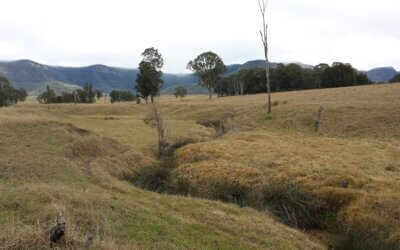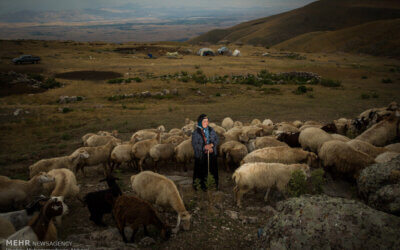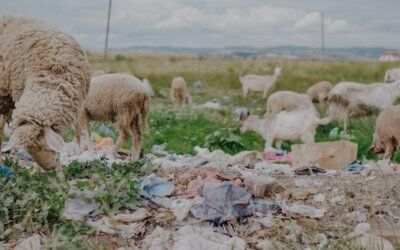Beyond Yield: Refining the Focus of Modern Agriculture
For decades, agriculture was judged by one single metric: yield.
How much could you grow?
How many tonnes per hectare can you obtain?
Farmers, researchers, and governments focused on pushing that number higher and higher. This relentless focus on production worked well during the Green Revolution, sending global agricultural production soaring and feeding billions.
But something else was happening beneath the surface!
While yield climbed year after year, the foundation of agriculture, the soil, was silently deteriorating. Globally, 70% of arable soil became depleted of essential nutrients and organic matter. Input costs spiralled upward as farmers needed ever-increasing amounts of fertilisers and pesticides to maintain production levels. And then came the realisation:
Higher yields didn’t guarantee higher profits.
Australia’s agricultural sector offers a clear example of this challenge. Despite technological advances, higher temperatures and reduced winter rainfall have slashed average farm profits by nearly 25% over the past two decades. The impact varies across different farming operations. Cropping farms are more affected by climate risks, experiencing severe drops during drought years, while livestock farms can adapt by adjusting stock numbers but suffer more from volatile commodity prices.
Due to climatic situations, average profits in Australia had been slashed nearly 25% over the past two decades.
Furthermore, global interest in emissions and sustainability is growing, adding pressure and opportunity for farmers to adapt.
More Than Just Yield
The fundamental question in agriculture has evolved. The farmers now ask, “Is it profitable, sustainable, and future-proof on today’s changing climate conditions?”
Today, quality is just as important as quantity. Consumers increasingly want food that is nutrient-rich, sustainably produced, and traceable products. While yield remains important, it is one of many components on how farms create value in the modern marketplace.
High yields can be achieved with heavy fertilisers, pesticides, and water use, but that approach comes at a cost. When soil loses organic matter, erodes, or loses its living organisms, yield becomes fragile. That is why the focus should shift to soil security: keeping soils secure, resilient, and productive over time. Secure soils lead to more stable yields, lower input costs, and better long-term profits.
Without soil security, yield is a short race. With it, yield becomes a sustainable agriculture.
Soil security is a holistic concept that considers not just soil bio-physical, but also its economical value, connections to people, and its governance.
Smart Farming Revolution
The agricultural mindset is undergoing a transformation. Success no longer comes from simply applying more fertiliser or using more water; it comes from using these inputs more intelligently.
Precision agriculture technologies are leading this revolution.
Soil testing, GPS-guided application systems, and integrated nutrient management allow farmers to apply exactly what their crops need, where they need it, and when they need it. This precision approach reduces waste, cuts costs, and improves profitability while minimizing environmental impact.
Australia’s experience illustrates this evolution perfectly. Throughout the 1980s and 1990s, broadacre farm productivity surged at 2.18% annually, driven by policy reform, farm consolidation, and the establishment of Rural Research and Development Corporations (RDCs). As subsidies were removed, inefficient farms exited the industry, allowing more productive operations to expand and adopt new technologies at scale.
However, since 2000, productivity growth has slowed to 0.72% annually and become more volatile. Despite this deceleration, agriculture still outperforms many other economic sectors. Australia’s commitment to innovation remains strong, with agricultural R&D funding reaching $2.98 billion in 2023-24.
Sustaining future growth will require continued investment in research and development, the foundation of agricultural innovation.
This technological evolution is now converging with broader sustainability goals through regenerative agriculture, creating new frameworks for measuring agricultural success that go far beyond traditional productivity metrics. This shift was clearly echoed at recent events I attended, including the Narrabri Field Day and the World Agri-Tech Innovation Summit, where the message was clear: profitability and sustainability are no longer separate goals but interconnected priorities.
A New Way to Measure Success
These shifts from precision agriculture to sustainability imperatives are being captured in frameworks like 3N Agriculture, which recognises that yield must now work in harmony with the environment, people, and long-term goals. The 3N framework brings together three priorities:
-
-
- Nature Positive – working with ecosystems to build resilience
- Nutrient Balanced – applying just what the soil and crops need
- Net Zero – aligning with global climate and sustainable development goals
-
Under this framework, yield remains a vital metric, but it is no longer the sole measure of success. Profitability, environmental sustainability, and long-term resilience now carry equal weight in determining agricultural success. This framework also opens door to natural capital markets, where farmers can potentially be rewarded for other environmental outcomes through biodiversity credits, water credits and carbon credits.
Conclusion: Redefining Success in Agriculture
The way we define success in agriculture is changing. It is no longer just about producing more. It is about producing enough, in the right way, for the long term.
The new metrics now looks like this:
-
-
- Profit: Ensures farming is viable
- Climate Resilience: Builds capacity to adapt to climate change
- Sustainability: Minimises environmental impact and preserving natural resources
- Soil Security Metric: Maintains the ability to perform certain role into the future
-
Farmers are already adapting. They are embracing smarter tools, restoring soil condition, and responding to new environmental and market pressures. The future of farming is not just high-yielding.
It is efficient, resilient and sustainable with the soil at its core.

by Wartini Ng
Postdoctoral Research Associate at the University of Sydney
Wartini is a Postdoctoral Research Fellow whose work advances soil security, with a focus on evaluating soil capacity and condition to safeguard soil into the future. Her research integrates advanced data analytics, proximal sensing, and machine learning techniques to improve the prediction of soil properties using large spectral databases. She now applies these approaches with digital soil mapping, strengthening the assessment of soil capacity and condition as a foundation for long-term soil security.
Related Articles
Fast Food Thinking Won’t Fix Slow Soil Problems
We live in a world that craves speed. We expect food in minutes, messages in seconds, and results overnight. But when it comes to soil, this mindset collides with reality. Soil does not work on fast-food timelines. It takes centuries to form just a thin layer of soil,...
Storytelling for soil: Engaging hearts to protect what’s beneath us
Soil speaks - sometimes through science, sometimes through story. In the Shahsavan lullabies of Iran, mothers reminded their children: “Bread rises from the soil; do not treat it lightly” “Earth is mother; if you wound her, her children will go hungry” These verses...
Empathy versus apathy: our perception of (micro)plastics in different environments
Close your eyes and think about plastic pollution for a moment. What environments come to mind? What animals affected do you visualise? I would guess that most of us probably think of polluted oceans. Images of beaches with plastic bottles and bags, fish and...



